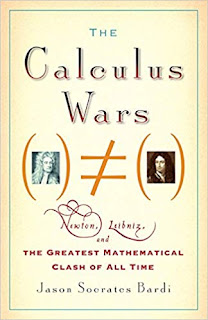 |
| Photo: Peter Lynch |
That’s Maths: Even the naming of the Thue-Morse sequence is about fair play, says Peter Lynch, emeritus professor at UCD School of Mathematics & Statistics – he blogs at thatsmaths.com.
 |
| Sequencing is important in sports: penalty shoot-outs in football, service order in tennis tie-breaks and choice of colour in chess matches. Photo: Clive Rose/Getty Images |
It is common practice in science
to name important advances after the first discoverer or inventor.
However, this process often goes awry. A humorous principle called
Stigler’s Law holds that no scientific result is named after its
original discoverer.
This law was formulated by Prof Stephen Stigler of the University of Chicago in his publication “Stigler’s law of
eponymy”. He pointed out that his “law” had been proposed by others
before him so it was, in a sense, self-verifying.
The Calculus Wars
Occasionally,
mathematical inventions are made simultaneously by more than one
person. Perhaps the greatest example is the formulation of calculus by Isaac Newton and Gottfried Wilhelm Leibniz. Jason Bardi, The Calculus Wars.
The conflict between British and European mathematicians raged for
decades before joint credit for independent discovery was accepted.
 |
| The Calculus Wars |
The ensuing controversy over priority was described in a book by Jason Bardi, The Calculus Wars.
The conflict between British and European mathematicians raged for
decades before joint credit for independent discovery was accepted.
 |
A remarkable
numerical sequence that has been discovered several times by different
mathematicians in different circumstances illustrates Stigler’s Law. It
was originally called the Morse sequence when, in 1921, it was
popularised by the American mathematician Marston Morse, who applied it
in differential geometry. Today, it is usually called the Thue-Morse
sequence: the Norwegian mathematician Axel Thue
discovered the sequence while studying “combinatorics” on words; this
was in 1906, well before Morse. But, more recently, the name Prouhet has
been prefixed to the title of the sequence, which was first studied by
Eugène Prouhet in 1851...
But what use is the Thue-Morse sequence? It arises in a remarkably wide
variety of contexts. It is valuable in number theory, combinatorics,
computer graphics, fractal geometry and equitable sharing. Let’s look at
the last of these.
Source: The Irish Times










